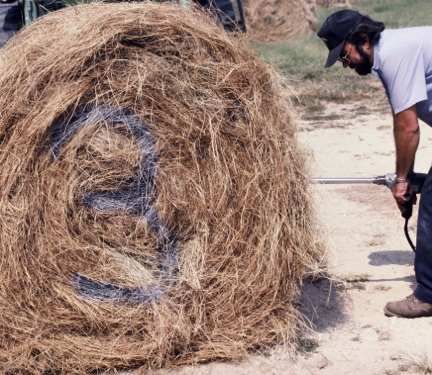
Only a relatively small percentage of livestock producers regularly test their hay or other stored feed. Some are probably just not aware of, or not well informed about, this service. Unfortunately, many others know about it but apparently don’t consider it important enough to take the time and expend the effort to do it. Yet, it is an activity that deserves serious consideration.
Forage testing simply refers to taking a small sample of hay or silage and having it analyzed to determine the feeding value of the material. Most Land Grant universities offer forage testing at a reasonable cost, and numerous commercial labs provide this service as well. Information provided typically includes percent moisture, crude protein, acid detergent fiber, nitrate N, ash, pH, crude fat, lignin, and total digestible nutrients (and sometimes other information as well). Relative forage quality (a calculated one-number assessment of the feeding value of a material) is also often provided.
There are at least two good reasons for sampling and testing hay or silage. The first is that it allows more efficient use of the feed material. By comparing the nutritional value of stored feed materials with the nutritional requirements of the species and class of animals being fed, a person can determine whether supplemental feeds need to be provided and, if so, the amounts and types needed.
Thus, producers who know the nutritive value of their stored forage can meet the needs of their animals without wasting nutrients or providing unnecessary supplemental feed. It's a simple, well-documented fact that a person can’t determine the nutritive value of a feed material just by looking at it. A laboratory analysis is the only way to know what a particular forage can provide to animals in terms of nutrition.
The second good reason for determining the nutrient value of stored forage is that it reveals how various production practices affect forage nutritive value. Some factors having the greatest effect on the quality of hay and other stored forage are: (1) the species and variety of the forage being used; (2) the growth stage at which it was harvested; (3) the amount, type, and timing of fertilization; (4) the percent and types of weeds present in the forage; and (5) the extent of weathering after harvest. The relative importance of these factors becomes clear when forage testing is done with regularity.
Information on how to take representative forage samples, how to package them, where to get them analyzed, what an analysis means, etc. is available from Extension personnel, from laboratories that analyze samples, and from commercial companies of various types. Feed and forage testing is like soil testing, sprayer calibration, and many other agricultural production techniques- it requires some time and effort, but it helps take some of the guesswork out of farming and will pay off well in the long run.
_____________
Foraging Ahead is a column presented by Reagan & Massey and written by Dr. Don Ball, Professor Emeritus at Auburn University. Dr. Ball is one of the authors of the popular book “Southern Forages.”
